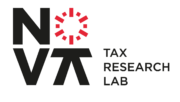“The role model for governments should be Estonia, a country where almost every bureaucratic task can be done online” The New York Times
Estonia (formally the Republic of Estonia) is a small country by the Baltic Sea in Northeast Europe that has a population of just around 1.3 million. Despite only having left the Soviet control in 1991, Estonia consistently ranks very high in most international rankings for quality of life, education, press freedom, digitalisation of public services and the prevalence of technology companies.
How is this possible?
Well, there are many reasons for this – namely its huge openness to implement innovative hassle-free ideas (in Estonia you can get married online with just a few clicks; or get an e-Residency in record time) – but the most interesting explanation is much simpler: Estonia has arguably one of the most transparent and simpler tax systems in the western world.
This is achieved thanks to the following main features of its system:
- Hassle-free tax compliance: Taxpayers – in particular companies – spend less time on tax compliance in Estonia than they would in any other country in the OECD (for corporate taxes, an average of 5 hours per year, in contract to the OECD’s 42 hours per year average);
- Shockingly flat personal income tax: Tax residentsin Estoniaare subject to a worldwide income basedproportional (i.e. flat) tax rate of 20%, which applies to all items (with little to no exclusions or loopholes) of income derived by a resident taxpayer (with the exception of dividends and pensions, which are either exempt or taxed at lower rates).
- Surprisingly hefty social security contribution scheme that transfers most of the burden to the employer: Employers operating in Estonia have to pay social security contributions at a cap-less rate of 33% over salaries (where 20% is used for financing public pension insurance and 13% for financing public health insurance). Employees only pay a 2% contribution to a compulsory accumulative pension scheme.
- Minimalist property taxes: There is no transfer tax on the acquisition of property (only non-material state and notary fees are charged over the transaction) and no property tax over the value of buildings (there is only an annual tax calculated over the value of the land at rates between 0.1% and 2.5%, depending on municipality).
- Smartly designed corporate income tax: Thereis no corporate tax on retained (undistributed) corporate profits. Instead, Estonia’s worldwide income based corporate taxation (this is a proper CIT not a WHT on dividends) is only levied (at 20%) on profits when they are actually distributed (either as dividends, share buy-backs, capital reductions, gifts/donations, liquidation proceeds, or other deemed profit distributions like non- business expenses).
- A lower 14% CIT rate is available for companies making regular profit distributions is available.
- Dividends are not taxed at the level of the shareholders under personal income tax, unless the dividend came from a company that only paid the lower 14% CIT rate, in which case a 7% taxation will apply under personal income tax at the level of the shareholder.
- Estonian companies have full access to tax treaty benefits.
With such an aggressively different tax system, one would expect Estonian’s economy and social welfare to be well below the red line. However, the truth is that Estonia’s gross domestic product (GDP) has been systematically growing at a pace much higher than European Union’s average GDP and is ranked at 12th place in the Quality of Life Index (e.g. Estonia has one of the highest levels of educational attainment and offers mothers the longest duration of leave in Europe at full pay at 85 weeks).
Estonia is, however, no paradise. At least not yet. The average Estonian household net-adjusted disposable income is still well below OECD average, there is a huge income disparity between rich and poor (is the flat rate tax to blame here?), the economy is still mostly carbon-intensive and, most surprisingly, a comparatively high percentage of citizens still live below the poverty line (despite the small number of homeless people).
There are obviously no foolproof models for taxation (or Government for that matter) and the verdict is still not out on whether the Estonian tax system is indeed the “fairest of them all”, but for a small country that only self-started around 30 years ago, it is pretty pretty pretty good (yes, this is a Larry David reference).
Luís Castilho
February 2023
